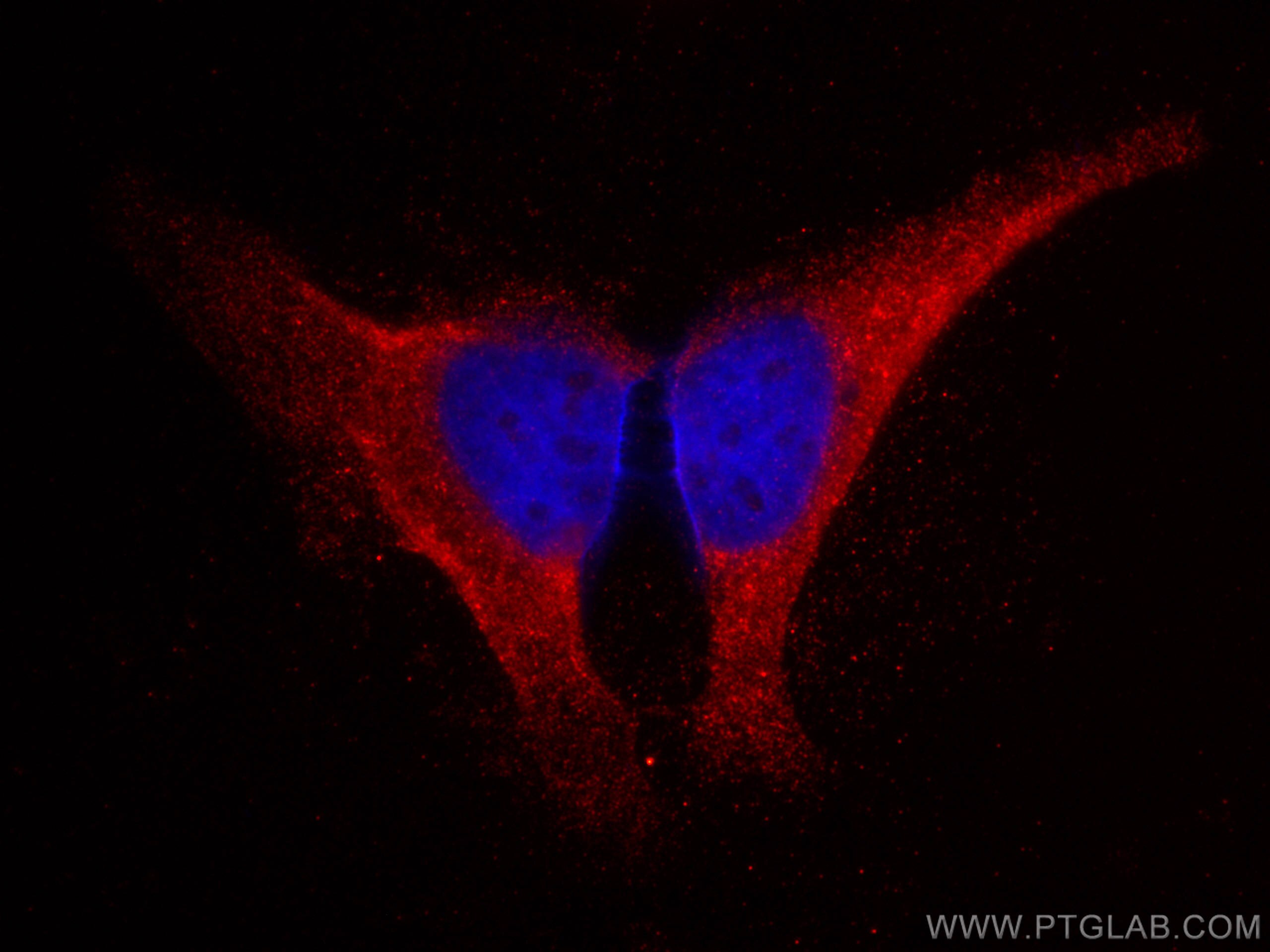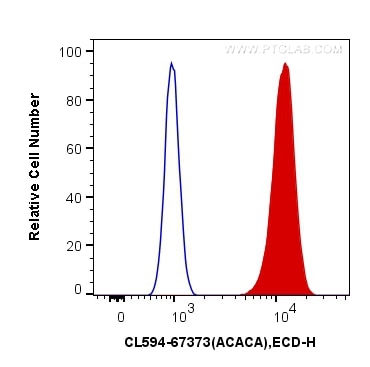Tested Applications
| Positive IF/ICC detected in | HeLa cells |
| Positive FC (Intra) detected in | HeLa cells |
Recommended dilution
| Application | Dilution |
|---|---|
| Immunofluorescence (IF)/ICC | IF/ICC : 1:50-1:500 |
| Flow Cytometry (FC) (INTRA) | FC (INTRA) : 0.40 ug per 10^6 cells in a 100 µl suspension |
| It is recommended that this reagent should be titrated in each testing system to obtain optimal results. | |
| Sample-dependent, Check data in validation data gallery. | |
Product Information
CL594-67373 targets ACC1 in IF/ICC, FC (Intra) applications and shows reactivity with human samples.
| Tested Reactivity | human |
| Host / Isotype | Mouse / IgG2a |
| Class | Monoclonal |
| Type | Antibody |
| Immunogen |
CatNo: Ag17503 Product name: Recombinant human ACC protein Source: e coli.-derived, PET28a Tag: 6*His Domain: 2260-2383 aa of BC137287 Sequence: LLEDLVKKKIHNANPELTDGQIQAMLRRWFVEVEGTVKAYVWDNNKDLAEWLEKQLTEEDGVHSVIEENIKCISRDYVLKQIRSLVQANPEVAMDSIIHMTQHISPTQRAEVIRILSTMDSPST Predict reactive species |
| Full Name | acetyl-Coenzyme A carboxylase alpha |
| Calculated Molecular Weight | 2383 aa, 275 kDa |
| Observed Molecular Weight | 260-270 kDa |
| GenBank Accession Number | BC137287 |
| Gene Symbol | Acetyl-CoA Carboxylase 1 |
| Gene ID (NCBI) | 31 |
| RRID | AB_2920123 |
| Conjugate | CoraLite®594 Fluorescent Dye |
| Excitation/Emission Maxima Wavelengths | 588 nm / 604 nm |
| Form | Liquid |
| Purification Method | Protein A purification |
| UNIPROT ID | Q13085 |
| Storage Buffer | PBS with 50% glycerol, 0.05% Proclin300, 0.5% BSA, pH 7.3. |
| Storage Conditions | Store at -20°C. Avoid exposure to light. Stable for one year after shipment. Aliquoting is unnecessary for -20oC storage. |
Background Information
ACACA(Acetyl-CoA carboxylase 1, ACC), also named as ACAC, ACC1 and ACCA, belongs to the biotin containing enzyme family. It catalyzes the synthesis of malonyl-CoA, which is an intermediate substrate playing a pivotal role in the regulation of fatty acid metabolism and energy production. ACACA is involved in the biosynthesis of fatty acids, and malonyl-CoA produced is used as a building block to extend the chain length of fatty acids by fatty acid synthase (FAS)(PMID:19900410).
Protocols
| Product Specific Protocols | |
|---|---|
| FC protocol for CL594 ACC1 antibody CL594-67373 | Download protocol |
| IF protocol for CL594 ACC1 antibody CL594-67373 | Download protocol |
| Standard Protocols | |
|---|---|
| Click here to view our Standard Protocols |






